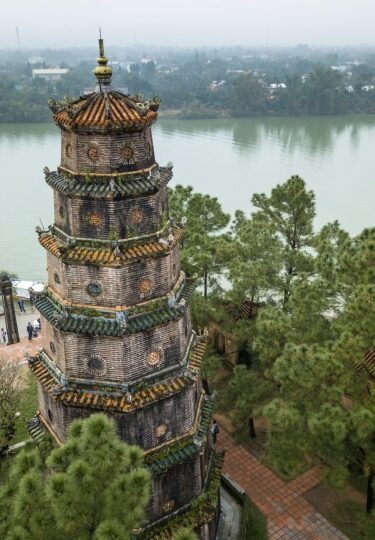Ask any traveler who’s visited and they’ll tell you that there’s no shortage of incredible things to do in Hue. Visitors are easily enchanted by Vietnam. From the beaches of Danang to the fast-paced streets of Ho Chi Minh City, there’s so much to see and do here.
When it comes to exploring the history of this dynamic, resilient nation, the former Imperial capital of Hue is certainly the place to start. This is where you’ll find the remnants of mighty mausoleums, fortified ramparts, and pagodas from the height of the Nguyen Dynasty.
You’ll also find exceptional food, once-forbidden spaces, and much more, all along the Perfume River.
Tour the Imperial Citadel
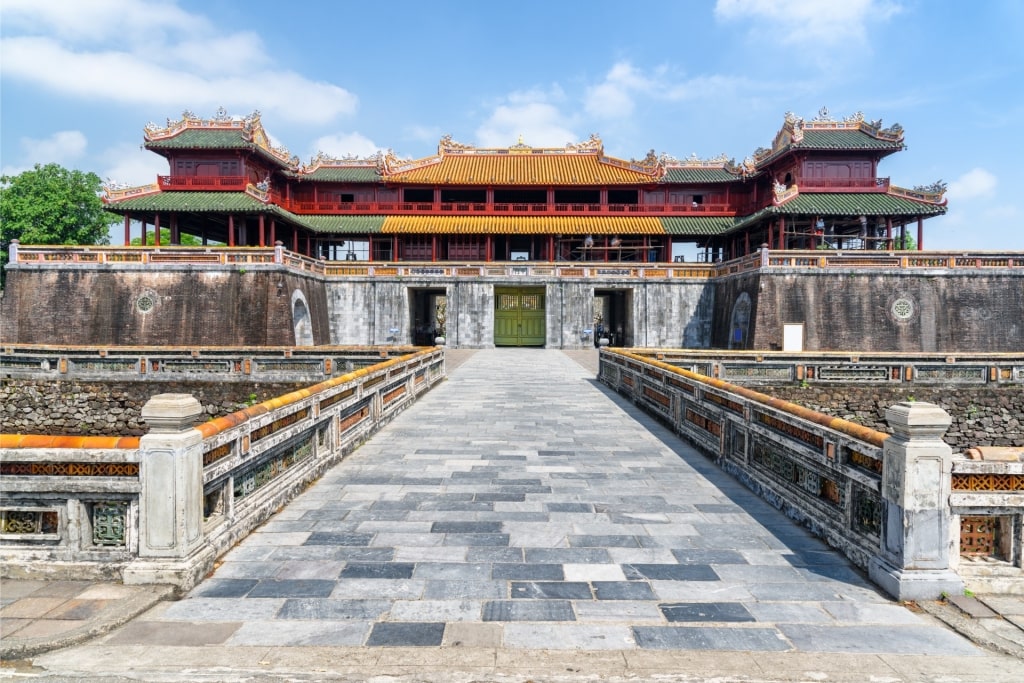
Imperial Citadel
More than a century before Hanoi became the capital, the mighty emperors of the Nguyen Dynasty ruled from their seat of power in Hue. It’s hard to fully imagine how grand the former Imperial Citadel once was. The violence and chaos of the Indochina Wars took their toll on many of the historic structures. Nevertheless enough survives to offer a glimpse—and extensive restoration efforts are underway.
If you see only one thing in Hue, it should be this justly lauded UNESCO World Heritage Site, a Russian nesting doll of fortifications surrounding the mysterious former home of emperors. Ramparts and a moat protect the entrance to the Imperial City. At its very core lies the Purple Forbidden City, or the inner court, which was once strictly off-limits to all but an elite few.
Although some of the opulent decorations have been lost to the ravages of war and time, what endures is still utterly mesmerizing. There’s so much to explore here that it’s important to budget ample time for your visit. You’re essentially exploring a city within a city, which means you’ll want to leave several hours to take it all in. Guided walking tours are strongly recommended for the experience, although not essential.
Visit the Thien Mu Pagoda

Thien Mu Pagoda
One of the best places to visit in Vietnam, this magnificent seven-story, octagonal pagoda is an essential stop on any traveler’s visit to Hue. It’s located a few miles from the city center on a small hill, but more than merits the slight journey. The roots of the Thien Mu Pagoda stretch back to the early 17th century, although much of the current structure is a more recent reconstruction.
The Thien Mu Pagoda contains a series of pavilions, each holding precious stele—stone monuments—and artifacts including an effigy of the Celestial Lady, the deity in whose honor the place was built. There’s also an immense bell that weighs more than 4,500 pounds and can be heard for miles.
Feast on Bún Bò Huế
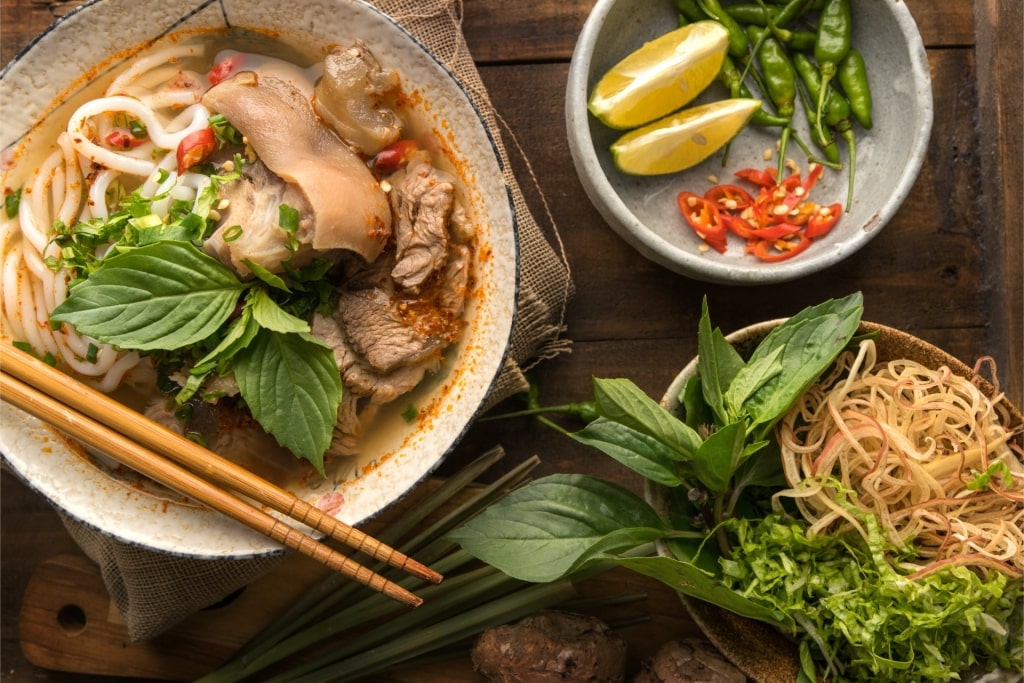
Bún bò Huế
If Hanoi has its beef pho and Hoi An has its cao lầu, then bún bò Huế is the former capital’s most iconic noodle dish. And while pho may be synonymous with Vietnamese noodles abroad, this dish with a royal pedigree predates it by several centuries. Rich, hearty, and meaty, bún bò Huế was once served to Nguyễn Lords in the late 16th and early 17th centuries.
This boldly flavorful Vietnamese dish starts off with a slow-simmered beef broth fragrant with lemongrass and chile oil, along with fish sauce and shrimp paste, which gives it a powerful hit of umami. Fat, cylindrical rice noodles are ladled into the soup.
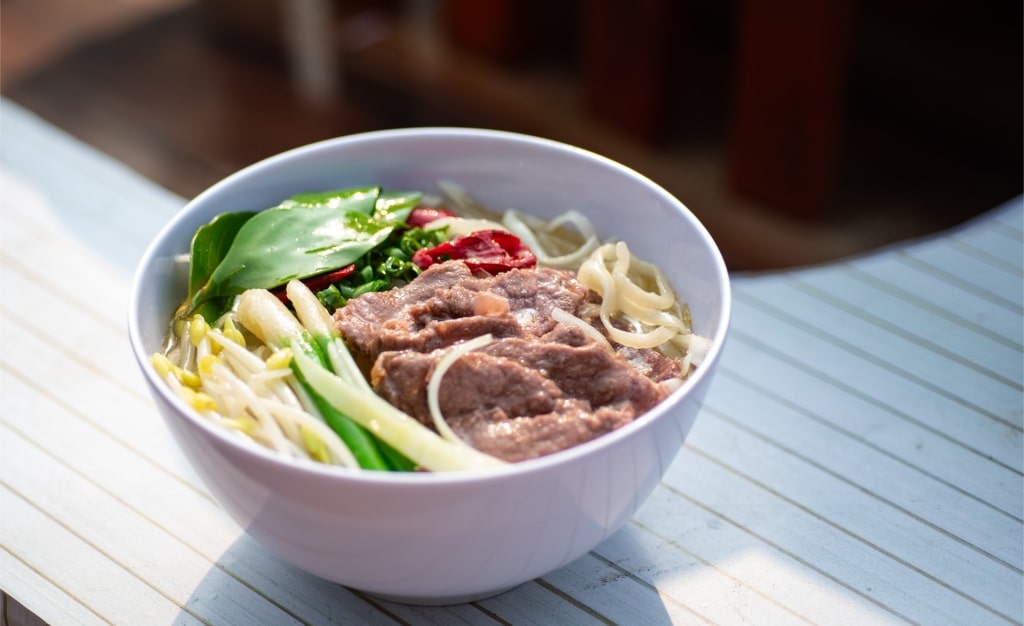
Bún bò Huế
As with pho, you can expect to find a variety of cuts of meat in your bowl. Pork knuckles, beef shank, oxtail, and beef brisket may all be used. Chả lụa, a type of cured sausage, is another common addition. Pig blood, which has been allowed to set into custardy pieces, is another popular add-on.
To order like a local, simply ask for bún bò, since only diners outside of Hue include the city name. It’s also generally best to look for these noodles at breakfast, when they’re traditionally served. They make for a particularly fortifying start to the day.
Ride a Boat Down the Perfume River
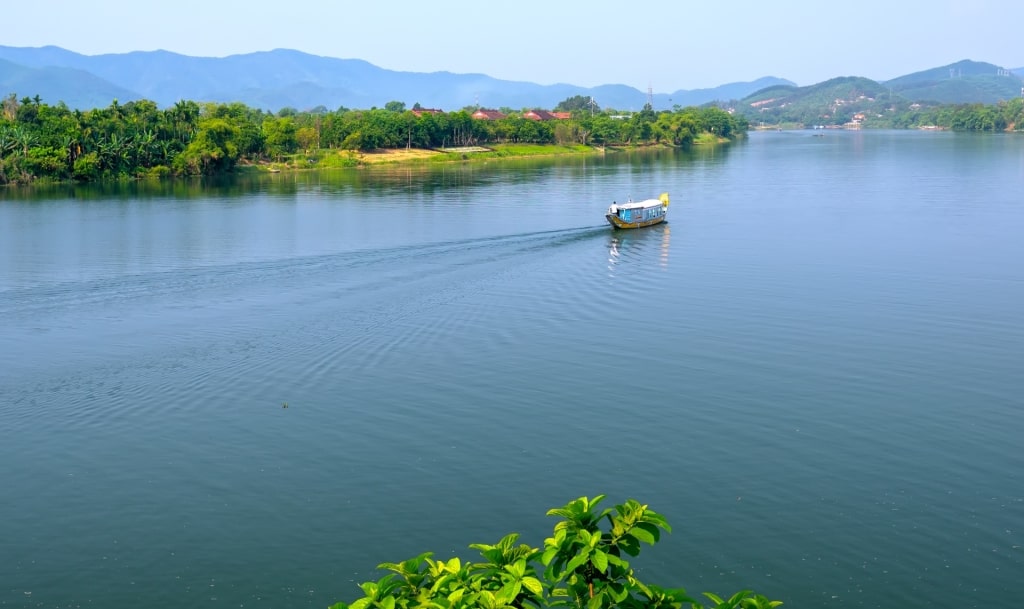
Perfume River
The rather poetically named Sông Hương, or “Perfume River,” winds languidly through the city of Hue. At least according to some, it derives its whimsical moniker from the blossoms that land in the river and drift gently down it. Generations of painters and poets have been inspired by its beauty—and it’s easy to see why.
The former Imperial capital was built along the river’s banks, and it still serves as its lifeblood today. A boat ride along the curves of the Perfume River is by far one of the loveliest things to do in Hue. Along the way, you’ll pass ancient tombs, elegant pagodas, and lush foliage.
Savor a Pot of Royal Tea
Sometimes referred to as Imperial tea, this fragrant drink has a history stretching back to the Nguyen Dynasty. Unlike black tea, Hue royal tea is composed of more than a dozen aromatic ingredients, including dried chrysanthemum, bitter melon, and dried jujube.
As befitting a favored elixir of emperors, Hue royal tea is meant to be slowly sipped and savored. It’s typically served in fine porcelain and accompanied by chewy sesame peanut candy. Seek it out in any of Hue’s historic tea houses.
Discover the Tombs of Ancient Emperors
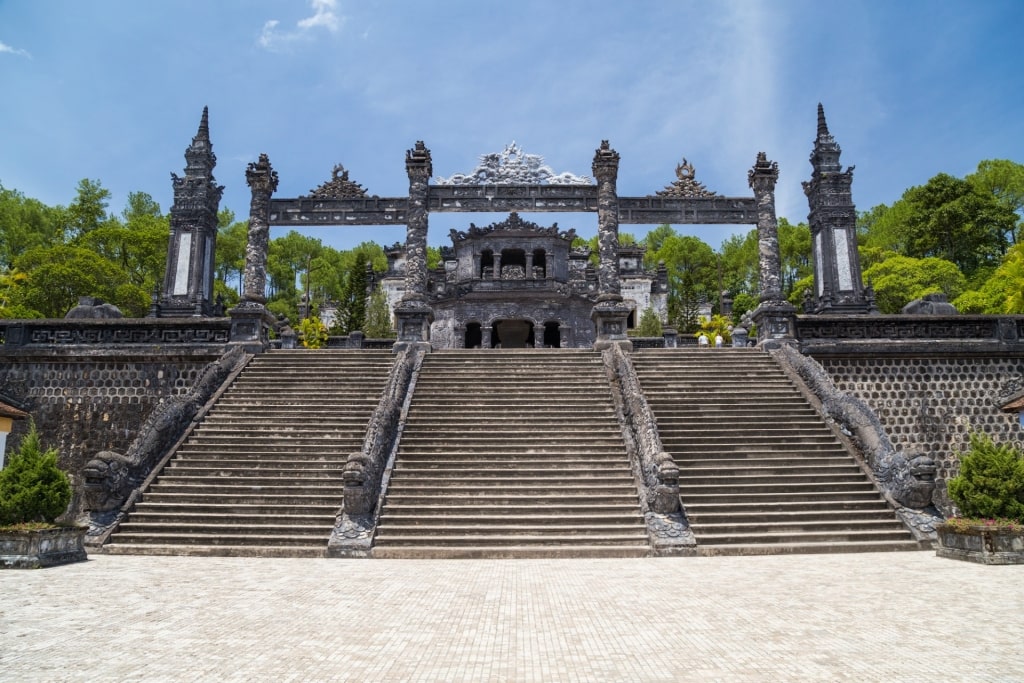
Tomb of Emperor Khai Dinh
One hallmark of Hue’s imperial past is that it’s now the final resting place of emperors. To get to the tombs, you’ll have to venture a few miles out of the modern city center. Luckily, this isn’t particularly hard to do; motorbikes, local buses, or taxis can all get you there. You’ll just want to plan your time accordingly.
Start your adventure at the Tomb of Emperor Khai Dinh, located about six miles out of the city center. Every element of this highly elaborate tomb, which was finished in 1930, adheres to the principles of feng shui. It’s also a particularly striking fusion of Eastern and Western architectural elements.
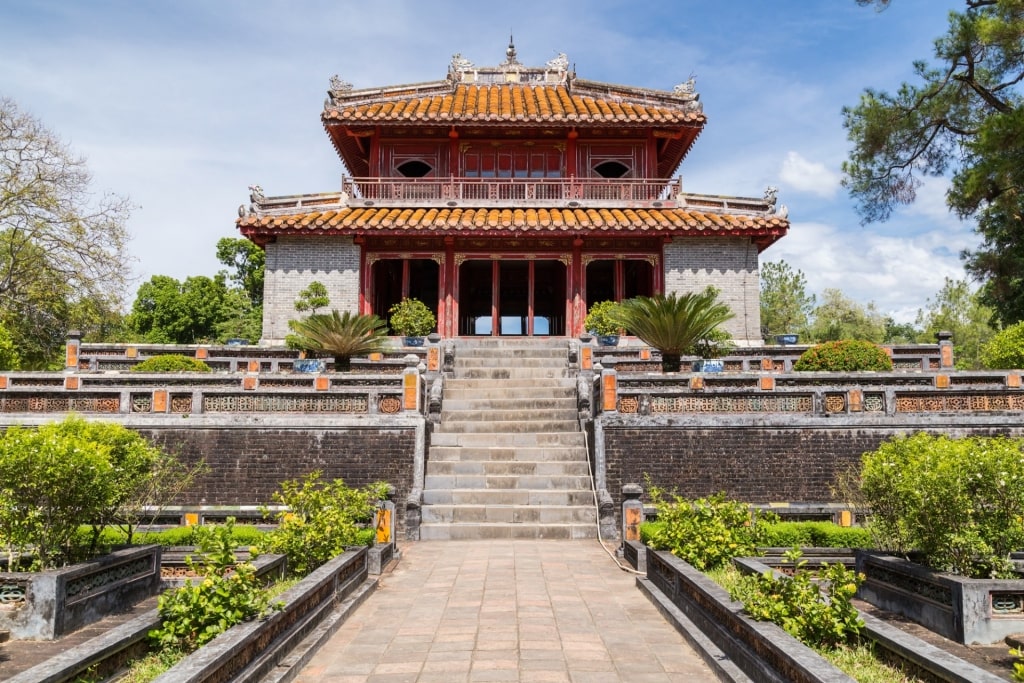
Mausoleum of Emperor Minh Mang
The Mausoleum of Emperor Minh Mang, a UNESCO World Heritage Site, dates back to the mid-1800s. It’s remarkably well-preserved, with wonderfully intricate stone carvings and artfully maintained gardens covering much of the premises. Finally, the Tomb of Emperor Tu Duc is sequestered away in a dense pine forest. In life, Tu Doc was a great poet and it’s easy to see how he drew inspiration from this area.
Embark on a Motorbike Sightseeing Tour
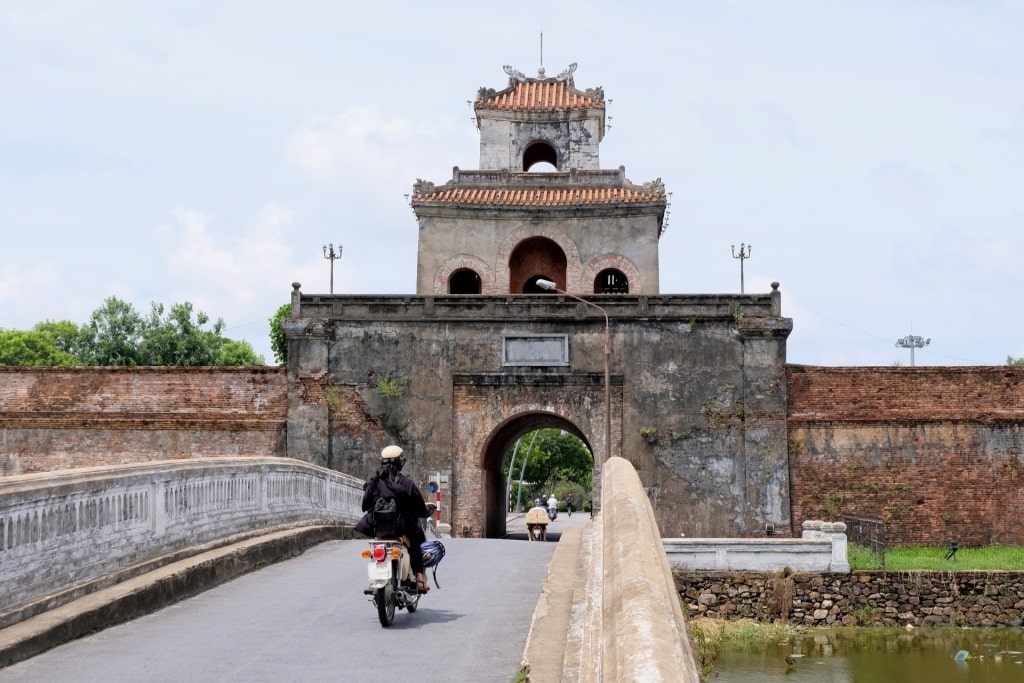
Motorbike
Ask anyone about the most efficient way to navigate Vietnamese cities and they’re likely to have the same answer: hop on a motorbike. These scooters are ubiquitous throughout the country, thanks to their ability to weave through traffic and navigate both paved and unpaved roads.
Multiple local tour companies offer motorbike tours, and discovering the city this way is one of the best things to do in Hue. Depending on the company, you’ll either be allowed to drive yourself or ride behind a designated driver.
Either way, it’s a great way to get a sense of the city and its surroundings. It’s particularly helpful since many of Hue’s most famous pagodas and cultural attractions are located outside of the city center.
Explore the Hue Museum of Royal Antiquities
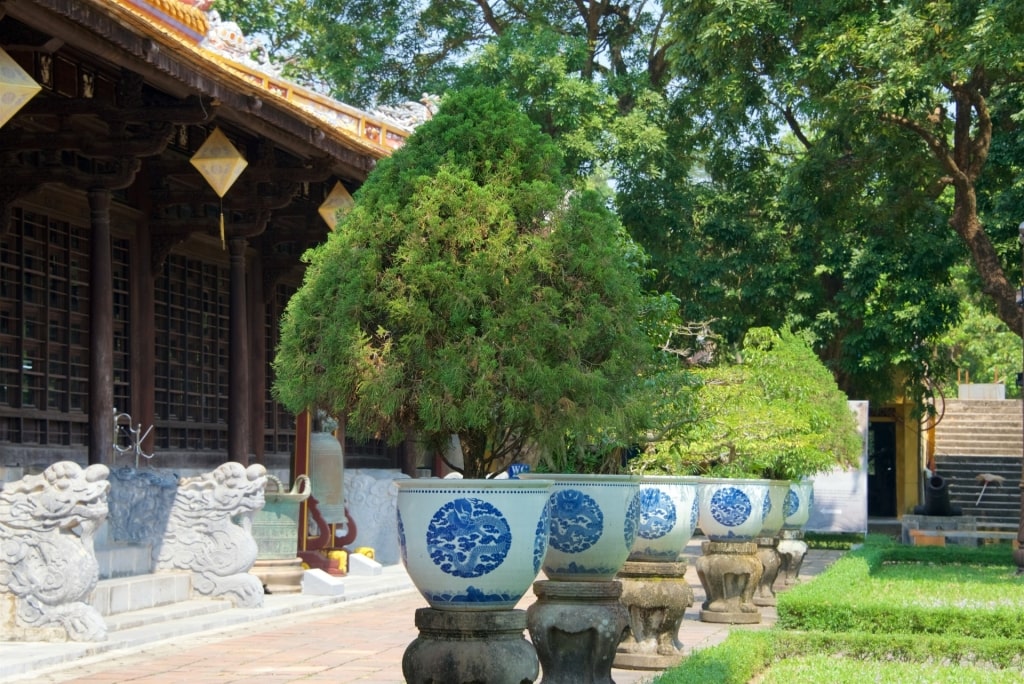
Hue Museum of Royal Antiquities
Since 1923, this museum has been a repository of some of the finest treasures of Vietnam’s imperial eras. There are more than 10,000 artifacts in the collection, although not all of those are on display at any given time.
Here, visitors will see beautifully embroidered silk robes, gold jewelry, and even an original, lavishly decorated throne from the Nguyen Dynasty. Keep an eye out for fine blue-and-white glazed porcelain works. Known as “Bleu de Hue,” this style was once highly coveted in both Europe and Southeast Asia.
The setting of the museum is almost as impressive as its contents. The collection is housed inside a former palace, which retains its original architectural splendor. It’s surrounded by manicured gardens and greenery.
Take a Salted Coffee Break

Càphê muối
One could argue that no one in the world does iced coffee better than Vietnam. The classic, most widely known version is càphê sữa đá, or iced milk coffee. This refreshing pick-me-up is made with particularly strong coffee brewed with a phin filter, a Vietnamese drip brew coffee maker. Sweetened condensed milk makes for a rich, lightly sugary treat.
Vietnam is famous for its coffee culture, but càphê sữa đá is far from the country’s only signature drink. In Hanoi you’ll find local shipping càphê trứng, a luscious, creamy elixir developed in the capital in the 1940s. This coffee owes its luxurious mouthfeel to raw egg yolks and condensed milk. The yolks are whipped with sugar and milk, then heated. As soon as the hot coffee comes in contact with the pale-golden mixture, it blooms into a lush foam.
Hue’s caffeine fix of choice is similarly indulgent. Càphê muối is a salted coffee that is equally delicious served hot or iced. It too starts with a base of very strong coffee and sweetened condensed milk. What really sets it apart, though, is a tuft of lightly salted whipped cream right before serving. For those who like a little flaky Maldon on their chocolate chip cookies, this one’s for you.
Shop Til You Drop at Dong Ba Market
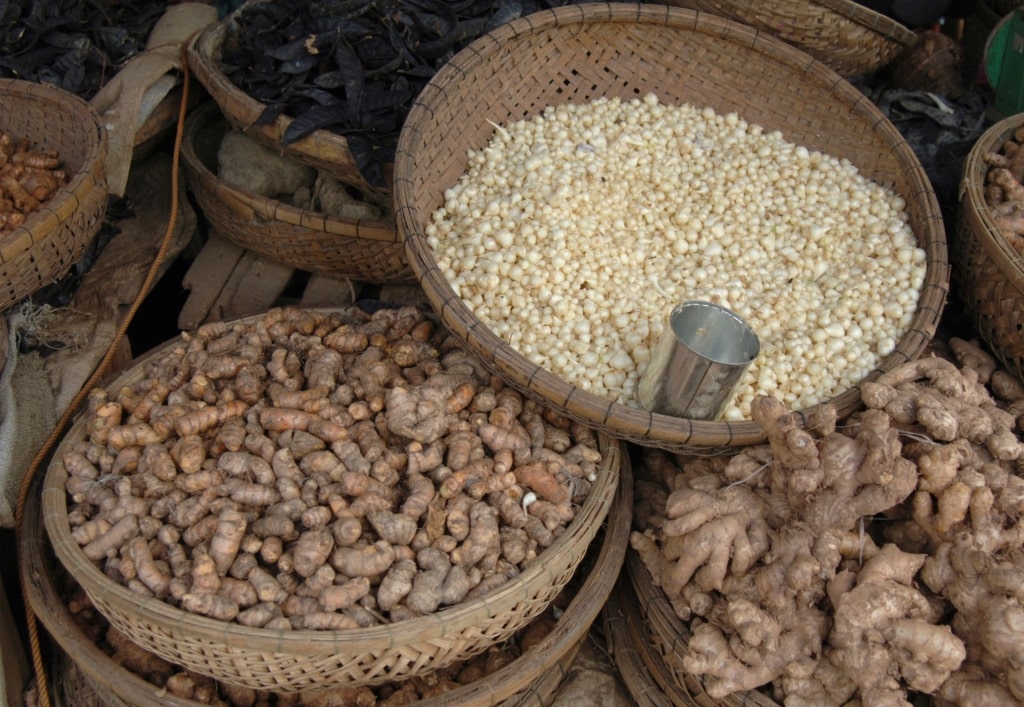
Dong Ba Market
For a glimpse of everyday local life, one of the best things to do in Hue is to swing by Dong Ba Market early in the day, before the heat gets too high. The history of this market dates back centuries, although it has only stood at its current location since the very tail end of the 1800s. It’s easy to find—just look for the prominent “bell tower” in the city skyline.
Dong Ba Market has a little bit of everything and is well-organized into different sections over three floors. For all snacks of all sorts, head to the first floor, which is dedicated to everything from fresh produce to candies and condiments. The second floor focuses largely on Vietnamese souvenirs of various sorts, while the third is all about garments.
Take a Tour of the An Dinh Palace
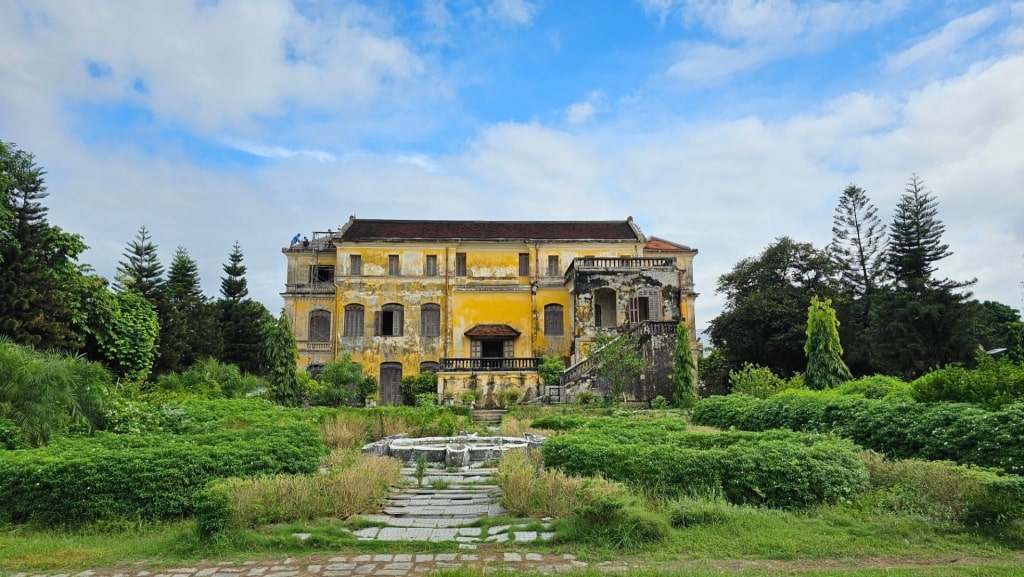
An Dinh Palace
This UNESCO World Heritage Site is a stunning example of Vietnamese neoclassical architecture. It was built by King Dong Khanh more than a century ago in honor of his son. Today, its faded colonial era grandeur makes it all the more evocative. The ochre-hued paint on the facade is peeling, yet the winged statues of angels and fountains still stand. While you can visit the palace unescorted, a guided tour will help you appreciate the many nuances here.
At certain points on the property, you might easily imagine you were wandering through an old French chateau that had fallen on hard times. Yet head inwards to the Trung Lap Communal House in the courtyard and you’ll see a dozen embossed bronze dragons. On the main gate, phoenixes and tigers share space with Doric columns. It’s this unusual blend of Eastern and Western design elements that makes the An Dinh Palace so distinctive.
Stroll Around the Grounds of the Tu Hieu Pagoda
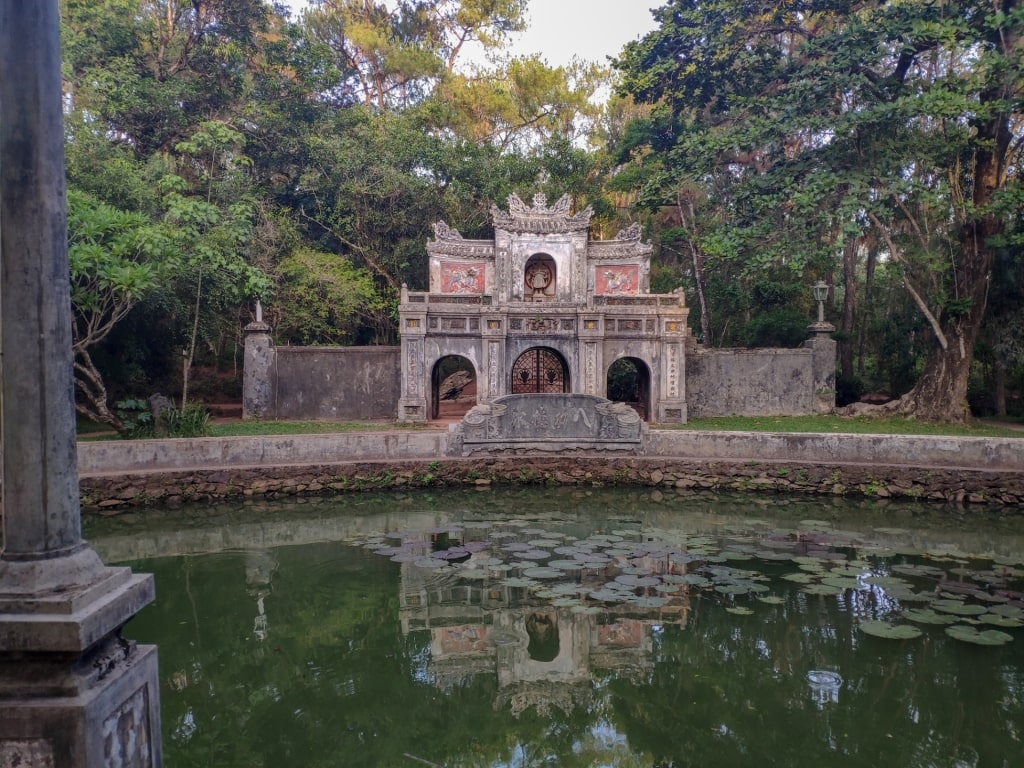
Tu Hieu Pagoda
The heady scent of incense perfumes this impressive Buddhist pagoda located slightly outside of the city center in Duong Xuan village. Although it was built in the Nguyen Dynasty, Tu Hieu Pagoda is still very much an active place of worship. Until his passing several years ago, Thích Nhất Hạnh, a Buddhist monk and peace activist, spread his teachings from this place.
The pagoda is situated in a particularly tranquil, verdant space—ideal for meditation and contemplation. Virtually all of the buildings in the complex are decorated with ornate reliefs. Of particular note is a rather unusual on-site burial ground. Behind the back of the pagoda, visitors will find the tombs of 24 eunuchs once associated with the imperial court.
Admire the Phủ Cam Cathedral

Phủ Cam Cathedral
If you need any evidence of the former French-colonial presence in Vietnam, look to the nation’s surviving churches. In Ho Chi Minh City, you’ll find Notre Dame Cathedral of Saigon, a grand 19th-century basilica. In Hue, worshippers can pay a visit to Phủ Cam Cathedral, which resides on the site of a former orange plantation.
Although a church has stood here since the mid-1600s, the current structure is much more modern. Due to Vietnam’s tumultuous history in the 20th century, this cathedral took more than 30 years to reach its final form. During the Tet Offensive, the partially finished building sustained so much damage that it was abandoned. In 2000, the completed Roman Catholic cathedral was finally fully opened to the public.
Read: Inspiring Things to Do in Vietnam
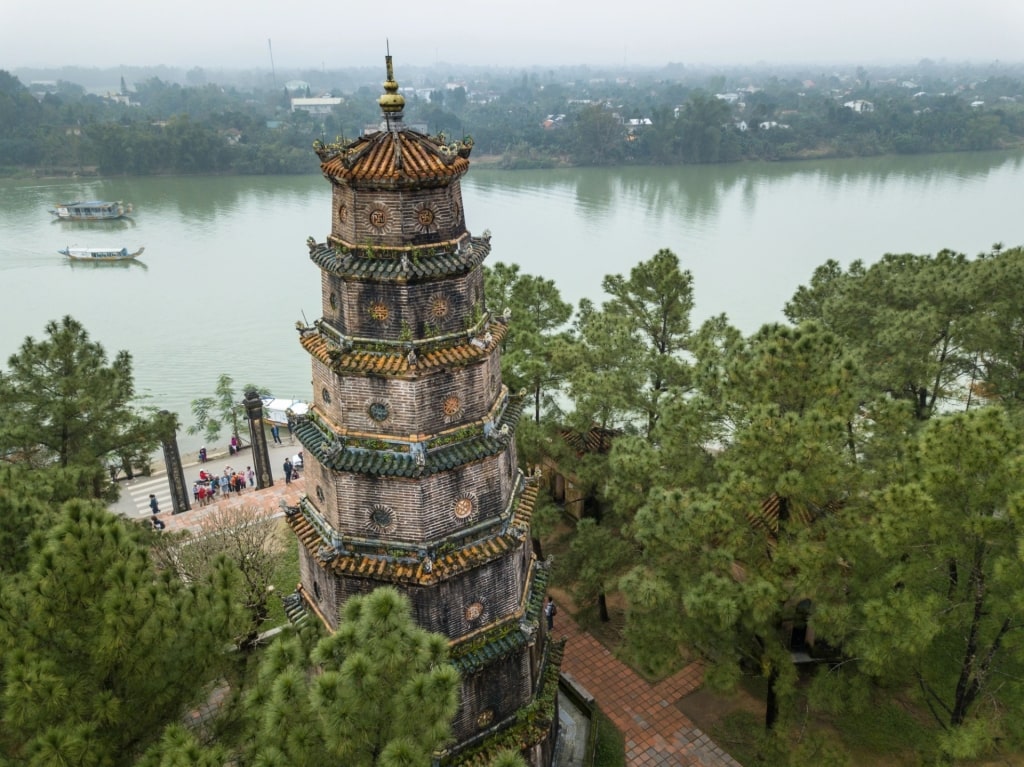
Thien Mu Pagoda
Discover for yourself all that Hue has to offer. Browse Celebrity’s cruises to Da Nang and book your next voyage today.
